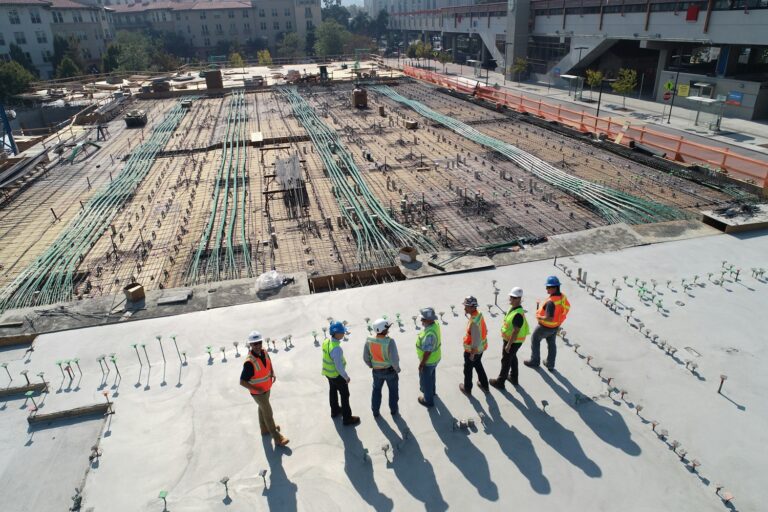When a commercial tenant moves out of a property, disputes often arise over the condition of the premises and who should pay for repairs. To help manage these situations fairly and efficiently, the Dilapidations Protocol provides a structured framework for landlords and tenants to follow before taking legal action.
Understanding the Dilapidations Protocol is essential for both parties, as failing to comply can lead to additional costs, delays or even an unfavourable court outcome.
What are dilapidations?
Dilapidations refer to breaches of lease obligations relating to the physical condition of a commercial property. These typically involve repair, redecoration or reinstatement clauses that require the tenant to return the premises to a specified condition at the end of the lease.
Common examples include:
- Failure to repair damage or wear and tear
- Removing fixtures or alterations not reinstated
- Leaving the premises unpainted or poorly maintained
- Damage to flooring, walls or utilities
When disputes arise over the extent or cost of such works, the Dilapidations Protocol helps both sides handle the issue professionally and transparently.
The purpose of the Dilapidations Protocol
The Dilapidations Protocol, part of the Civil Procedure Rules Pre-Action Protocols, aims to encourage early communication and settlement before court proceedings. Its main objectives are to:
- Promote the exchange of information about alleged breaches and repair costs
- Allow time for negotiation and possible settlement
- Ensure disputes are resolved efficiently and proportionately
- Reduce unnecessary litigation and legal expenses
Courts expect both landlords and tenants to follow the protocol before a claim is issued. Non-compliance can result in cost penalties, even if the claim itself succeeds.
Key steps in the Dilapidations Protocol
The protocol sets out a clear sequence of actions for both parties to follow.
1. Schedule of dilapidations
The landlord’s surveyor prepares a schedule outlining each alleged breach, the works required to remedy it and the estimated cost. This schedule should be reasonable, supported by evidence and served within a reasonable time after lease expiry, usually within 56 days.
2. Quantified demand
Alongside the schedule, the landlord must include a quantified demand setting out the total cost of works, professional fees and any loss of rent. The document should also state whether the landlord intends to carry out the repairs or claim damages instead.
3. Tenant’s response
The tenant then has 56 days to respond. Their surveyor will review the claims, accept or dispute specific items and provide a counter-schedule with their own cost estimates or arguments. This stage encourages dialogue and potential compromise.
4. Negotiation and settlement
Both parties are expected to meet and discuss the schedules in detail, seeking agreement where possible. Many cases are settled at this stage through negotiation or mediation, avoiding the need for litigation.
5. Court proceedings (if unresolved)
If no settlement is reached, the landlord may issue a claim in the County Court or High Court. However, the court will consider whether the Dilapidations Protocol was followed properly when deciding costs.
Calculating damages
The aim of dilapidations damages is to compensate the landlord for genuine loss, not to provide a windfall. Damages are generally capped by Section 18(1) of the Landlord and Tenant Act 1927, which limits recovery to the lower of:
- The cost of the works required to remedy the breaches
- The actual reduction in the property’s value caused by the disrepair
For example, if a landlord plans to redevelop or refurbish the property regardless of the tenant’s actions, the recoverable damages may be significantly reduced.
The importance of professional advice
Both landlords and tenants should appoint experienced surveyors and solicitors as early as possible in the process. Surveyors provide technical expertise on the condition of the property and the cost of repairs, while solicitors ensure compliance with the protocol and protect their client’s legal position.
Tenants should also review their lease terms before expiry to understand their obligations and potentially carry out necessary works to minimise liability.
Related reading: I Don’t Have a Tenancy Agreement: What are My Rights?
Benefits of following the protocol
Adhering to the Dilapidations Protocol benefits both parties by:
- Encouraging early settlement and cost savings
- Maintaining professional relationships between landlords and tenants
- Reducing the likelihood of court proceedings
- Demonstrating reasonableness to the court if litigation becomes unavoidable
Following the correct process helps ensure that any compensation awarded accurately reflects real losses and avoids unnecessary disputes.
Seek expert legal guidance
Dilapidations claims can be complex and costly without the right advice. Whether you are a landlord seeking to recover losses or a tenant facing an extensive schedule of dilapidations, legal guidance can help you navigate the protocol confidently and achieve a fair outcome.
Please note that this article is solely for informational purposes. It’s not a substitute for legal advice. We encourage readers to contact Osbourne Pinner for case-specific guidance.
For clear, practical advice on dilapidations and commercial lease disputes, contact our commercial property team. We can assist with every stage of the process, from initial negotiations to court proceedings.
We’ll get you started with a free 30-minute consultation to understand your case. We’re based in Harrow, Canary Wharf, Piccadilly Circus and Manchester, but we’re also happy to speak remotely on a video call. Call 0203 983 5080, email [email protected] or use the form below to book your consultation.




